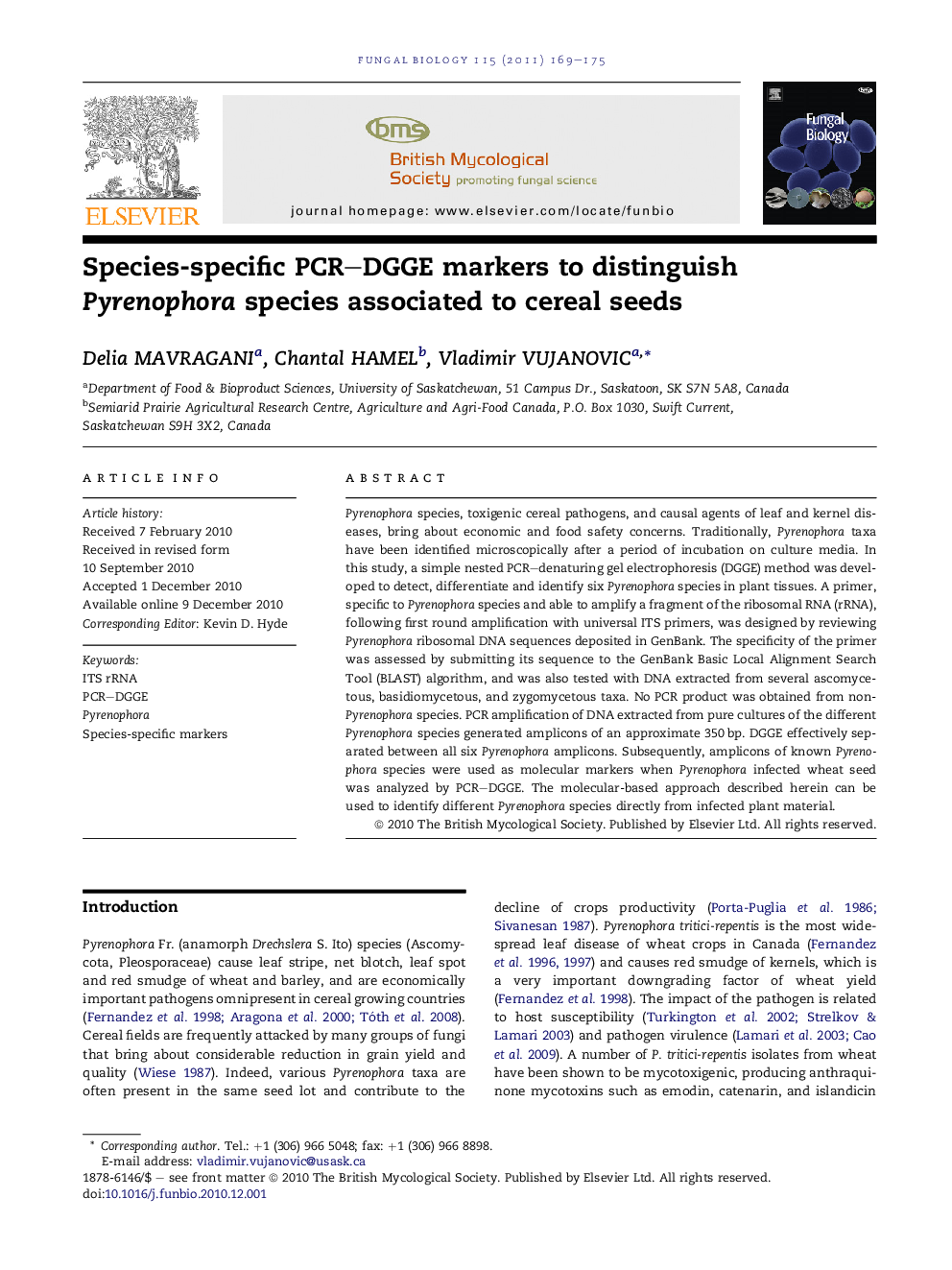| Article ID | Journal | Published Year | Pages | File Type |
|---|---|---|---|---|
| 4357439 | Fungal Biology | 2011 | 7 Pages |
Pyrenophora species, toxigenic cereal pathogens, and causal agents of leaf and kernel diseases, bring about economic and food safety concerns. Traditionally, Pyrenophora taxa have been identified microscopically after a period of incubation on culture media. In this study, a simple nested PCR–denaturing gel electrophoresis (DGGE) method was developed to detect, differentiate and identify six Pyrenophora species in plant tissues. A primer, specific to Pyrenophora species and able to amplify a fragment of the ribosomal RNA (rRNA), following first round amplification with universal ITS primers, was designed by reviewing Pyrenophora ribosomal DNA sequences deposited in GenBank. The specificity of the primer was assessed by submitting its sequence to the GenBank Basic Local Alignment Search Tool (BLAST) algorithm, and was also tested with DNA extracted from several ascomycetous, basidiomycetous, and zygomycetous taxa. No PCR product was obtained from non-Pyrenophora species. PCR amplification of DNA extracted from pure cultures of the different Pyrenophora species generated amplicons of an approximate 350 bp. DGGE effectively separated between all six Pyrenophora amplicons. Subsequently, amplicons of known Pyrenophora species were used as molecular markers when Pyrenophora infected wheat seed was analyzed by PCR–DGGE. The molecular-based approach described herein can be used to identify different Pyrenophora species directly from infected plant material.
